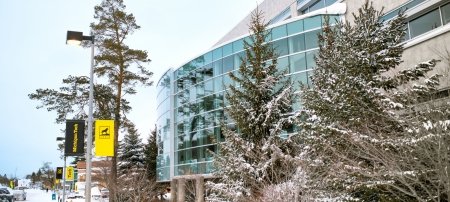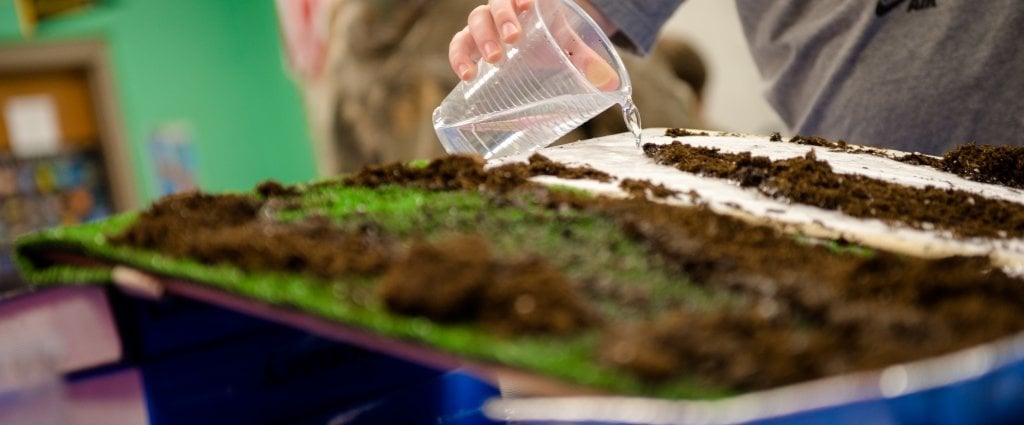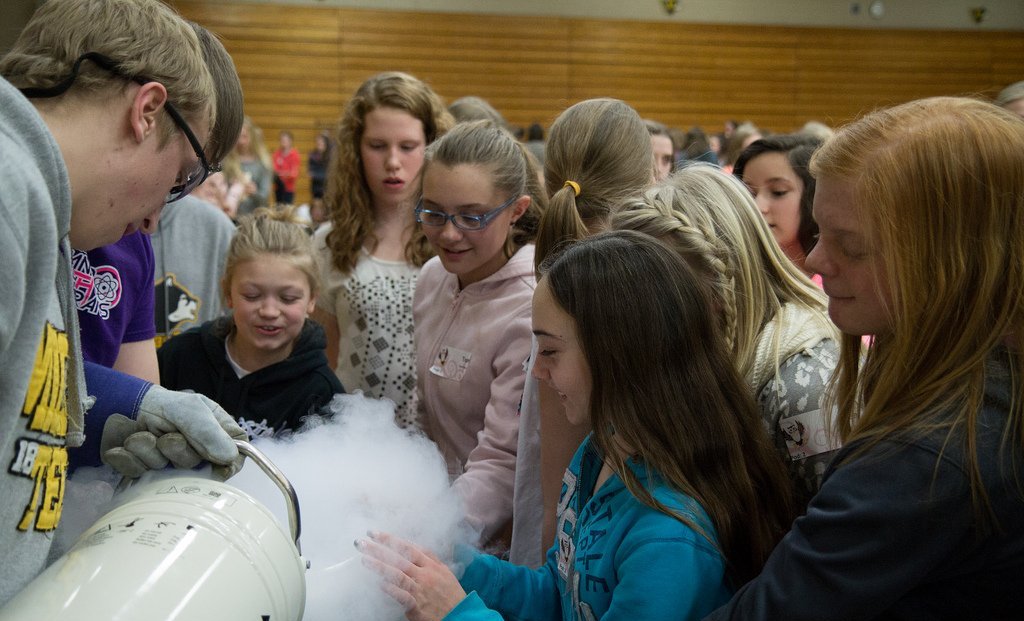Researchers, Teachers, Join Ranks to Make Earth Science More Engaging

Some of the most pressing problems facing the world today—climate change, earthquakes and volcanoes, energy and water resources—fall in a field most Americans haven’t studied since their middle school earth science class. So Michigan Technological University is partnering with the Grand Rapids, Mich., Public Schools and other groups in Michigan, Washington, D.C. and Colorado to help students learn more about the earth.
The program, called MiTEP (Michigan Teacher Excellence Program), is funded by a $4 million 5-year National Science Foundation (NSF) Math-Science Partnership grant. It brings university geoscience researchers and middle-school teachers together to find ways to make earth science more exciting and meaningful to middle school students.
In the process, the project hopes to motivate more young people to consider further education and careers in science, technology, engineering and math, fields known collectively as STEM. Educators nationwide have expressed concern about a declining interest in STEM among today's students. STEM professionals are in high demand and are viewed as critical in our nation's effort to maintain its leadership role in the world’s economy.
"Middle school earth science is particularly important because it is often the first science course taken by secondary school students," said Jacqueline Huntoon, dean of the Graduate School at Michigan Tech. The MiTEP partners believe that if students have a good experience in their middle school course, they will be enthusiastic about taking more science in high school. Students who like science are more likely to do well in their science classes, so improving attitudes early on may have long-term benefits for students.
MiTEP uses innovative approaches to improving student learning. EarthCaches, for example, are bringing earth science to life for school children. EarthCaches are outdoor hunts for geologically significant places that help teach about the earth. They incorporate learning to use tools such as GPS and Google Earth, collecting data, identifying a geological theme illustrated by the site or sites found, and summarizing the findings in a brief, clear description to share with others.
MiTEP EarthCaches each link a geosignificant place to the school and state earth science curriculum and standards. Some of the MiTEP EarthCaches include the Delaware Copper Mine, Torch Lake Stamp Sands, the Kalamazoo River Oil Spill, and Woods Lake, an inland kettle lake formed by ancient glaciers. "We recognize and want to fully utilize the power of place in teaching," Huntoon explained.
Ann Benbow, director of education and outreach at the American Geological Institute is excited about participating in the new program. "This new research-based program will help those in the geoscience education community make better-informed decisions when designing earth science curricula, implementing instruction and providing professional development opportunities for teachers," she said.
Unlike many educational fix-it projects, MiTEP researchers work closely with the classroom teachers and school district representatives to collect information to help them identify effective ways to improve student learning and attitudes. Teachers have a leadership role in the project. The researchers use the teachers’ input to design professional development activities that are tailored to meet the needs of middle school earth science teachers. Curricula and teaching methods developed by MiTEP will be carefully evaluated to determine which are most effective in improving student learning.
"We're talking about a fundamental and much-needed study of how to best reform science education, one that could make an enormous difference to the future of our nation," said Huntoon.
"This project has tremendous potential because Michigan's educational issues are typical of the nation’s,” noted Bill Rose, professor emeritus and volcanologist in the Department of Geological and Mining Engineering and Sciences at Michigan Tech and lead researcher on the MiTEP project. “This project could serve as a template for improving STEM education throughout the country."
Michigan Technological University is an R1 public research university founded in 1885 in Houghton, and is home to nearly 7,500 students from more than 60 countries around the world. Consistently ranked among the best universities in the country for return on investment, Michigan's flagship technological university offers more than 120 undergraduate and graduate degree programs in science and technology, engineering, computing, forestry, business, health professions, humanities, mathematics, social sciences, and the arts. The rural campus is situated just miles from Lake Superior in Michigan's Upper Peninsula, offering year-round opportunities for outdoor adventure.




Comments